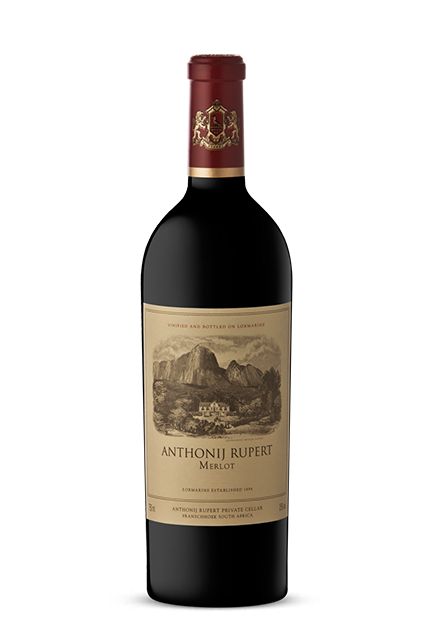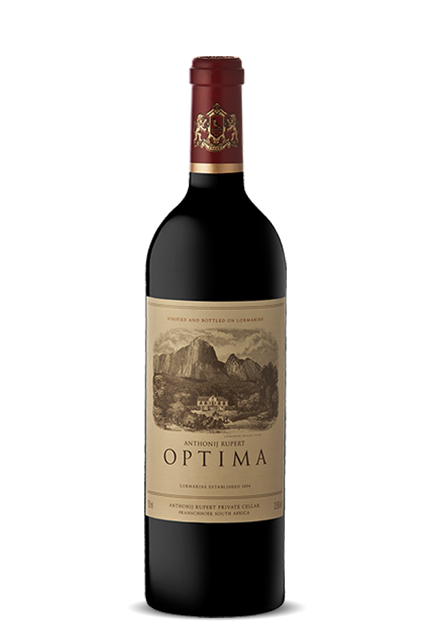Blend

Blend 2016
Compote of red and black berry fruit dusted with baking spice on the nose. Lovely interplay of ripe, yet lively hedgerow and dark fruit with spice, bright succulence and a deeper, earthier cocoa note. Rounded, plush and rich, the wine is elegant, polished and statuesque. Seamless integration of fruit and sympathetic oak adds to the overall impression of harmony. Focused and long with a rewarding finish.

Blend 2015
Richly seductive with its mélange of black fruits, spice, tobacco leaf, and a captivating floral hint on the nose. Those same opulent berry compote notes are apparent in the mouth: raspberry, blue, and black berries with some violets and nutty spice reminiscent of toasted pecans and hazelnuts. Taut, focused, and reflective of an excellent vintage, the wine has yet to unfurl and show its true colours. It’s harmonious, graceful, and richly textured, with a lovely oak platform, but it’ll benefit from more aging to reveal its full complexity. Long, impactful, and memorable flavour.
Accolades: 89 Points – Tim Atkin MW , 89 Points – James Suckling

Blend 2013
Complex bouquet of black berry fruits, rich fruitcake, tobacco, herbs and even a subtle note of violets.
The palate is superbly refined, elegant and poised with the rounded rich black cherry-, plum- and cassis notes countered by spice, cedar and deeper leather and tobacco leaf/cigar box flavours. Powerful but restrained. The oak is effortlessly integrated and supports the fruit harmoniously. Complex, long and richly rewarding. An aristocrat of a wine.
Accolades: 93 Points – James Suckling, 91 Points – Wine Spectator, 90 Points – Robert Parker Wine Advocate, 90 Points – Platter’s SA

Optima 2012
Subtle floral perfume with hints of blue- and black fruits with spice-dusted plum.
The mouth is richly fruited with the same plum, spice, blue- and blackberries. Succulent and generous but reined in and not overblown – as supple and lithe as a gymnast. Elegantly structured with well-knit oak. Long, refined finish.
Accolades: 93 Points – James Suckling.
Vintage Notes
With less rain and more difficult conditions, total wine grape production was lower than in 2015. Despite the drier weather, the vineyards remained healthy, producing smaller berries with high flavour concentration and good colour. Depth and subtle structure indicate a very promising vintage for the 2016 wines.
Winemaking
Grapes are hand-picked, placed in small lug boxes, and transported to the cellar in a refrigerated truck. The whole berries are double-sorted in the cellar using optical sorting before being gravity-fed into wood fermenters. Each parcel is cold-soaked for a few days before gradually increasing in temperature, where fermentation occurs naturally. After fermentation, the skins were macerated for 5 days. The wines were aged in 60% new French oak for 24 months before being bottled unfiltered and bottle-aged for additional seven years before release. The grapes are primarily from our Franschhoek vineyards, with a small portion coming from our Groenekloof vineyards.
Origin of Fruit
Coastal
Vintage Notes
The 2015 vintage was our driest and earliest harvest in a very long time, with a resultant small crop, very healthy harvest with low disease stress. With the absence of the usual heat waves in most regions, cooler than usual weather in February was ideal for ripening and harvesting. Lower temperatures at night during this time contributed towards good colour and flavour particularly in red cultivars. Temperatures escalated again during March, which led to the harvest ending approximately two weeks earlier than usual in most regions. Promising grape analyses with low pH plus good acidity and sugar levels, indicated high quality wines to come from this vintage. Smaller berries coupled with moderate temperatures during the harvest time led to good colour and intense flavour in this year’s red wines.
Winemaking
Grapes are picked at optimal ripeness in small 18-kg lug boxes, and then transported to the winery in refrigerated trucks. Once at the winery, the grapes are stored in our cold room at 5°C. This brings down the temperature of the grapes, ensuring only firm and cool grapes go onto the sorting line, preventing oxidation and juice loss. The bunches are destemmed, and the berries are sorted with an optical sorter, scanning, and Sorting berries for premium color and size. Fermentation happens in 10- ton French oak fermenters and in 225L French oak barrels. The time on the skins lasts between 21 and 32 days. Malolactic fermentation occurs, and aging is completed in a 225L French oak barrel with 80% new oak used in combination with 20% second-fill barrels. Components from each of the different vineyard blocks are made and aged separately for the first 16 months. Careful barrel selection and blending follow to ensure optimum consistency and quality in the final blend, which is then allowed a final sixmonth barrel maturation. Bottling is done after 24 months of total barrel maturation, and then finally, allowed extensive bottle aging before release into the market.
Origin of Fruit
Franschhoek
Vintage Notes
The vineyards for this specific blend were chosen from our best sites, L’Ormarins in Franschhoek and Rooderust in Groenekloof, close to Darling. The L’Ormarins vineyards with the decomposed granite supplied the richness and fullness to th e wine. The Rooderust vineyards, which has more clay and a slightly warmer climate, supplied th e intense fruit aromas. Together these terroirs produced a unique wine.
Winemaking
Grapes are picked at optimal ripeness in small 18kg lug boxes, and then transported to the winery in refrigerated trucks. This is to prevent premature crushing and oxidation of the grape juice. At the winery, the grapes are stored in a cold room at 5°C. This brings down the temperature of the grapes to about 10°C that keeps the grapes firm and cool to prevent oxidation and juice loss on the sorting line. The bunches are destemmed and the berries are sorted with an optical sorter that scan berries for colour and size , and only the best goes into tank for fermentation. Fermentation happens in 10-ton French oak fermenters and in 225l French oak barrels. Time on the skins was between 21 and 32 days. Malolactic fermentation happened 100% in 225l French oak barrels. Ageing was in 225l French oak barrels 85% new and 15% second fill. All the different vineyard blocks are made and aged separately for 16 months. Then we do a barrel selection to pick the very best that will work for this blend. After the blend was made it was taken back to the same barrels for another 6 months. Bottling after 24 months in barrel was done with gravity, and then the bottles were cellared for extensive bottle ageing before release into the market.
Origin of Fruit
Franschhoek & Groenekloof
Vintage Notes
The vineyards for this specific blend were chosen from our best sites. The L’Ormarins vineyards with the decomposed granite supplied the richness and fullness to the wine. The Rooderust vineyards, which has more clay and grow in a slightly warmer climate, supplied the intense fruit aromas. Together these terroirs produced a unique wine.
Winemaking
Grapes are picked by hand, placed into small lug boxes and transported to the cellar in a refrigerated truck. In the cellar, the whole berries are manually double-sorted and then gravity-fed into wooden fermenters. Each batch is cold-soaked for a few days and then slowly brought up to temperature. Fermentation takes place naturally. The wines were aged for 24 months in 100% new French oak, bottled unfiltered and bottle-aged for 24 months.
Origin of Fruit
L’Ormarins/ Rooderust







